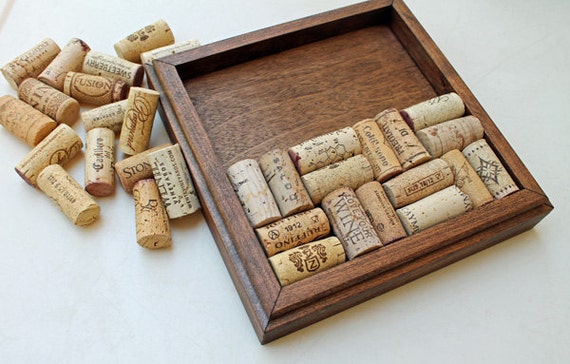Hemp is one of the most controversial crops in the United States today due to being confused with marijuana. Hemp, grown for its seeds, fibers and stalk is a plant from the same genus,
Cannabis, as the psychoactive cultivars which are grown for marijuana; primarily the flowering portion of these plants. But that’s where the similarity between hemp and marijuana ends. Marijuana contains relatively high levels of THC, the potent psychoactive chemical in marijuana, usually around
5-10%.
Hemp, on the other hand, tests out for THC in the range of 0.3 to 1.5%. When grown medicinally the flowers of hybrid
Cannabis species such as crosses from
Cannabis sativa and
Cannabis indica contain a balanced THC and
Cannabinol ratio. These flowers are used for many purposes including anti nausea, anti anxiety, appetite stimulation and also show promise in stopping the spread of cancers. Hemp is grown for a wide variety of uses, yet neither for recreation nor medicine. Former C.I.A. director, R. James Woolsey was quoted in the
New York Times saying Marijuana growers “hate the idea of having industrial hemp anywhere near,” This is because cross breeding with industrial hemp crops would lower the concentration of THC, the psychoactive ingredient in plants grown for recreational use.
Uses for the Hemp Plant
What makes hemp a valuable crop is its multitude of uses. Worldwide,
hemp is used in paper, insulation, animal bedding, carpeting and home textiles and furnishings. Auto industry giants like BMW and Mercedes-Benz use
hemp in the manufacture of dash boards and door panels.
Hemp Crete is a promising building material, which may someday be used to 3D print houses. And these are just a few of the uses to which the hemp plant is being used as an
industrial asset. Aquarian Bath uses two hemp materials in our products, hemp fabric and hemp seed oil.
Fabric
A primary product created from hemp fiber which we use at
Aquarian Bath is fabric. Hemp fabric is softer and more durable than fabric made from cotton fibers. Hemp is also resistant to molding, which is an excellent feature for our new Hemp-Organic Cotton washcloths and towels. Hemp cultivation compares more favorably to the methods used to
conventionally raise cotton, which includes
GMO cotton seed, pesticides and herbicides. Plus, hemp is a crop that requires no herbicides because its' bushy, fast-growing qualities suppress weed growth. Also, while hemp can benefit from a certain amount of nitrogen
fertilizer, too much fertilizer tends to weaken the fiber quality. Some fungicides may be used to treat the seeds initially. In Hemp is thought to have originated in China, because there is the largest genetic diversity among the plants there. The Chinese-grown hemp plants that were used to make our textiles were cultivated without pesticides, herbicides or fertilizers. Hemp fibers can be processed without bleaching, formaldehyde or heavy metals. Also, this crop has a negative carbon footprint, which means that it absorbs more carbon from the atmosphere than what is required to grow it. At Aquarian Bath, our
hemp textile supplier has strong environmental policies in place with respect to fiber processing and dying of fabrics.
Hemp Seeds and Hemp Seed Oil
Hemp seeds are used as food as well as medicinally for certain types of constipation, and the pressed oil from the seeds is useful for food or body and hair products. Much of the organic hemp seed and hemp oil used in the U.S. comes from Canada, where pesticides are not used on hemp seed crops, but some fertilizer may be used to raise the hemp plant. Another source of hemp seed is China, which has a long history of using hemp seeds in traditional Chinese medicine.
Traditional Chinese medicine suggests a decoction of the unhulled whole nut/seed. Whole seeds are called
Huo Ma Ren in Chinese, and are used primarily for alleviating constipation in elderly, constipation in pregnancy and post-partum. The usual dosage is 9-15 grams per day in decoction. Organic hulled hemp seeds can be sprinkled on salads, added to smoothies, or homemade granola bars. Including these hulled seeds in the diet of elderly and post-partum women may help to prevent constipation characterized by dry difficult to pass stools.
Hemp seed oil is made by pressing hemp seeds. Thirty-three percent of the total weight of the hemp seed is essential fatty acid oils, such as linoleic acid, omega-6 (55%) and alpha-linolenic, omega-3 (22%). It also contains an easily digestible complete protein that is gluten free. Hemp seed oil has a nutty flavor and can be used in recipes that don’t require cooking, including salad dressing, condiments and pesto. Hemp seed oil should not be cooked or used for frying foods. Adding hemp seed oil to the diet has been shown to reduce skin itchiness and dryness due to
eczema. Hemp seed oil with its high nutritional value is also a great addition to skin care products, since the lipids found in hemp seed easily penetrate and nourish the
skin.
Hemp oil must be kept refrigerated in dark, airtight containers. If you want to keep your hemp seed oil for longer lengths of time, store it in your freezer. The key is keeping opened bottles of hemp seed oil cold and in the dark to prevent the oil from oxidizing and becoming rancid. Because of the fragile nature of hemp oil, it must be used in relatively low concentrations in body products together with other oils or ingredients with antioxidant properties.
Now that you know many great uses for hemp, wouldn't you like to see this crop grown in the USA? We would love to support US farmers by purchasing domestic hemp products. If you would too, please sign this petition at moveon.org which calls to amend the Controlled Substances Act to exclude industrial hemp from the definition of "marihuana."














